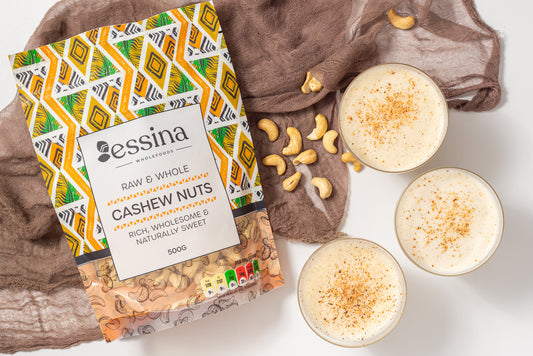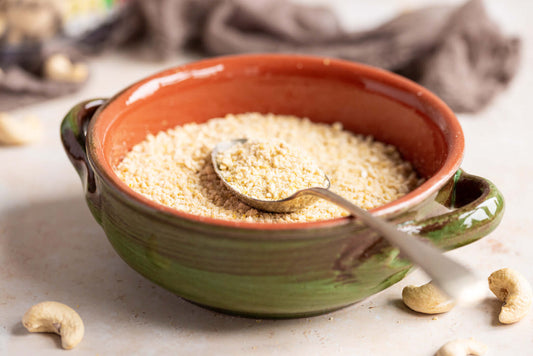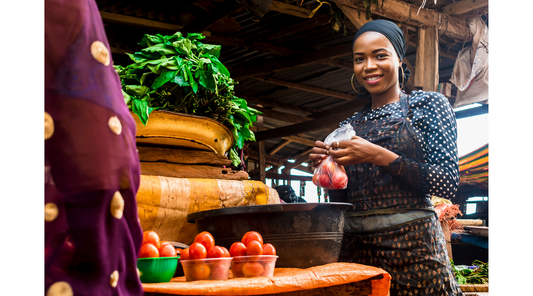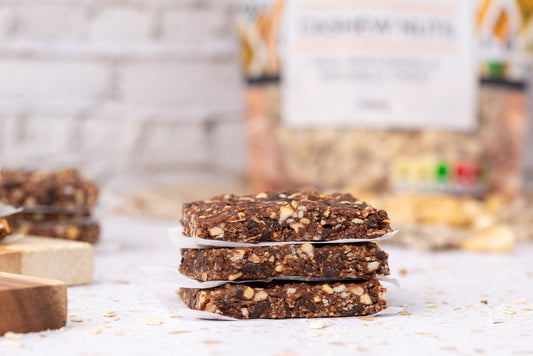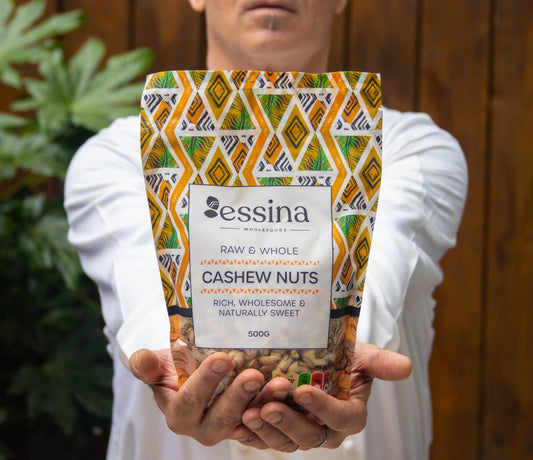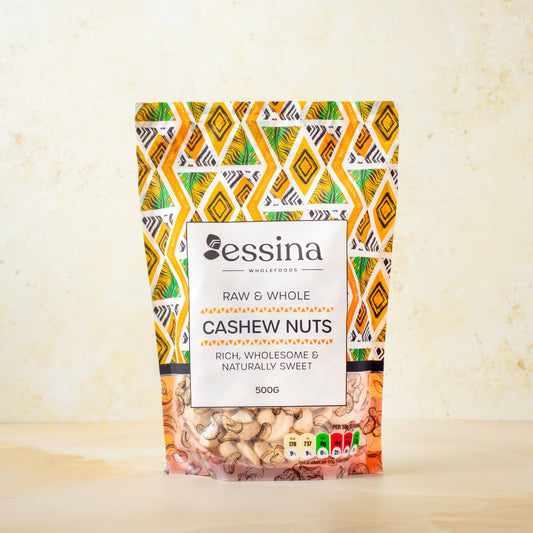How to Make Delicious Fonio and Cashew Polenta in 35 Minutes
Samale Nur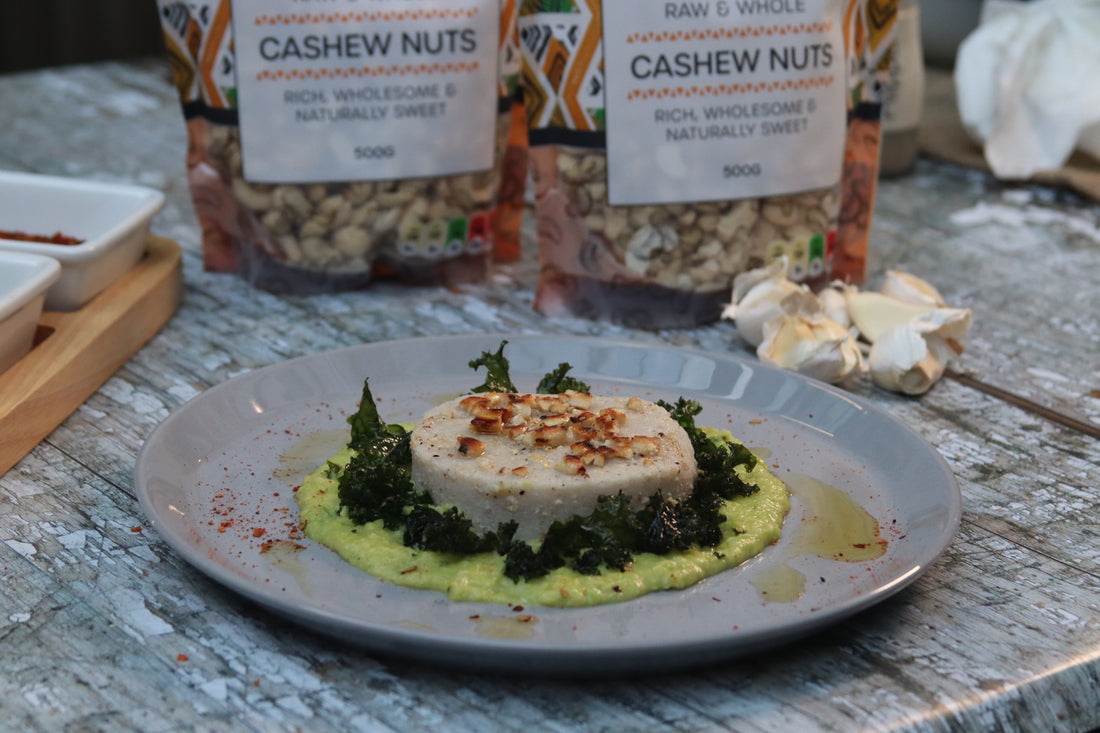
Polenta is a traditional Italian dish made from coarsely ground yellow cornmeal. It has a smooth, creamy texture and is often served as a type of porridge, side dish, or used as a base in both savoury and sweet dishes. Initially, polenta was a staple food in Northern Italy and was usually associated with the cuisine of the poor, as cornmeal was cheap and filling. Today, however, it has risen in culinary stature and can be found in various gourmet recipes.
Fonio Polenta with cashews is a delicious twist on the traditional polenta dish. This recipe involves replacing cornmeal with fonio, a gluten-free ancient grain that has been used for thousands of years in West Africa.
The addition of cashews provides a delightful nutty flavour to the dish while also providing numerous health benefits.
What is Fonio?
If you are not familiar with West African cuisine, you may not have heard of Fonio before. Fonio is a small, nutrient-dense grain, part of the millet family, which grows in the arid regions of West Africa. It has been an essential crop that has been cultivated for over 5,000 years in the Sahel region of Africa, which includes countries such as Senegal, Mali, and Guinea.
Fonio is naturally gluten free and rich in essential nutrients like protein, fibre, and B vitamins. Because it is so nourishing and easy to cultivate even in challenging environments, fonio has become known as one of Africa's "miracle grains." Today, fonio is gaining popularity around the world as people seek out healthier alternatives to traditional grains like wheat and corn.
Description of the grain and its origins
Fonio grows in sandy soils and can tolerate droughts better than most grains. This makes it an ideal crop for farmers in West Africa who must deal with unpredictable weather conditions. The plant is tall (up to 120 cm) with small leaves and white flowers that grow on spikes. The seed head is made up of clusters of seeds that are about the size of a pinhead. Once harvested, these seeds are dried and hulled by hand.
Nutritional benefits of Fonio
Despite its small size, Fonio packs quite a punch when it comes to nutrition. It is gluten-free, low-glycaemic index (GI), high in protein (containing all essential amino acids), fibre-rich (helping with digestion), and provides important minerals like iron, calcium, magnesium, and zinc. For people looking to reduce their carbohydrate intake or follow a paleo or keto diet plan, fonio can be an excellent alternative to rice or other grains.
Health Benefits of Cashews
Cashews are not only delicious, but they also offer several health benefits. They are high in healthy fats, protein, and fibre which can help keep you feeling full and satisfied for longer periods of time.
Additionally, cashews are an excellent source of vitamins and minerals such as magnesium, copper, and zinc. These nutrients play a crucial role in maintaining good health.
Explanation of why cashews are a great addition to this dish
In fonio and polenta with cashews recipe, the addition of cashews not only adds a delightful crunch but also enhances the nutritional value of the dish. The natural sweetness and creaminess of cashews complement the nutty flavour of Fonio perfectly. Moreover, the healthy fat content in cashew nuts helps regulate blood sugar levels and provides sustained energy throughout the day.
Nutritional Benefits of Cashews
Cashew nuts contain several essential vitamins and minerals like magnesium, copper, iron, zinc, potassium which helps maintain good cardiovascular health. These nutrients can help regulate blood pressure levels by supporting healthy blood vessel function.
Additionally, eating cashew nuts regularly may contribute to weight loss as they are low in calories and high in fibre content that keeps you feeling full for longer periods of time. Overall adding cashew nuts to your daily diet can provide numerous health benefits while adding flavour to your meals.
Variations and Serving Suggestions
Suggestions for Different Ways to Serve the Dish
Fonio and cashew polenta is a versatile dish that can be served in many ways. One way to enjoy it is as a side dish, served alongside grilled or roasted meat. It also pairs well with roasted vegetables, such as carrots or broccoli. For a vegetarian option, try serving it with sautéed mushrooms and spinach.
Ideas for Variations on the Recipe
Sometimes you might wonder what to cook with polenta? There are several ways to put your own spin on the fonio and cashew polenta recipe. One variation is to add some herbs or spices to the polenta mixture before cooking, such as rosemary or thyme for a savoury flavour or cinnamon and nutmeg for a sweet version.
You could also experiment with several types of cheese, such as feta or goat cheese or parmesan cheese. Another variation is to switch up the nuts used in the recipe. Instead of cashews, try using almonds, pistachios, or even hazelnuts for a unique twist on this classic dish.
For those who prefer a sweeter version of fonio and cashew polenta, try adding some honey or maple syrup before serving. This will give it a deliciously sweet flavour that pairs well with fresh berries or whipped cream. No matter how you decide to serve it up, Fonio Polenta with cashews is sure to be a hit at your next dinner party!
How to cook with polenta?
Cooking with polenta begins by slowly whisking fonio into boiling water or broth until it thickens into a creamy porridge texture. Once cooked, this versatile base can either be served immediately in its soft form or cooled and solidified, then sliced and baked, grilled, or fried for a delightful textural contrast.
Fun Facts About Fonio, Cashews and Polenta
The Magic Grain of Africa
Fonio is known as the "magic grain" of Africa because it can grow in poor soil conditions where other crops would not survive. It is also a drought-resistant crop, making it an important staple for many African communities. In fact, West African folklore says that Fonio was a gift from God to help humans survive during times of famine.
An Ancient Grain
Fonio has been cultivated for over 5,000 years in West Africa. It was a staple food for the Dogon people of Mali and the ancient Egyptians used it to make bread. Despite its long history, only recently has it gained popularity outside of Africa.
Where polenta comes from?
The origin of polenta is particularly associated with three Northern Italian regions: Lombardy, Veneto, and Friuli-Venezia Giulia.
In Lombardy, polenta is often served with robust meat dishes and stews, while in Veneto, it is commonly served alongside baccalà (salted cod) or with a topping of creamy cheeses. Friuli-Venezia Giulia, which shares a border with Slovenia, frequently serves polenta as an accompaniment to hearty goulashes and Eastern European-inspired dishes. Each region has its unique spin on polenta, highlighting the dish's versatility and deep roots in Italian regional cooking.
Cashews: Not Nuts?
Did you know that cashews are not actually nuts? They are seeds that grow on the bottom end of cashew apples, which are a type of fruit. The cashew seed is surrounded by a toxic shell that must be removed before eating.
A Nutritional Powerhouse Duo
Fonio and cashews make an amazing combination not just in terms of taste but also nutritionally. Fonio is gluten-free and rich in essential amino acids while cashews are high in healthy fats, vitamins E and B6, and minerals like copper and magnesium. Together they provide a balanced mix of protein, fibre, healthy fats, vitamins, and minerals making them ideal for those looking to boost their overall health.
Fighting Malnutrition with Fonio
Fonio has been recognized by the United Nations as an important crop for fighting malnutrition due to its high nutritional value. In countries like Mali where malnutrition is prevalent among children under five years old, efforts are being made to promote the consumption of Fonio-based foods as part of a balanced diet.
A Versatile Ingredient
Cashew nuts and Fonio are not just nutritious, they're also versatile ingredients in the kitchen. Fonio can be used as a gluten-free alternative to couscous or rice, while cashews are great additions to salads, stir-fries, and even desserts. The possibilities are endless!
Conclusion
The Perfect Comfort Food with Nutritional Punch
Fonio and cashew polenta is a delicious and easy-to-make dish that packs a nutritional punch. Fonio, the primary ingredient in the dish, is a gluten-free superfood that is rich in protein and essential amino acids. Cashews are also a fantastic addition to the recipe due to their high fat content and rich flavour.
Dinner Party Special
This dish is perfect for any occasion, from casual weeknight dinners to elegant dinner parties. The creamy texture of the polenta combined with the crunchy cashews will leave your guests hungry for more. You can also experiment by adding different herbs or spices to give this dish your own individualized touch.
The Future of Superfoods
Fonio and cashew polenta can be seen as an example of how superfoods such as Fonio are becoming more popular among health-conscious people who want tasty and nutritious food options. This trend is expected to continue as more research confirms the health benefits of these superfoods.
Overall, Fonio and cashew polenta is not only delicious but also healthy and easy to make. It is a perfect dish for anyone who wants a quick meal that is packed with flavour and nutrition!
